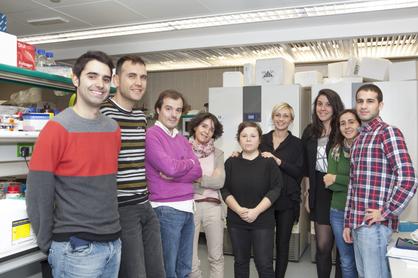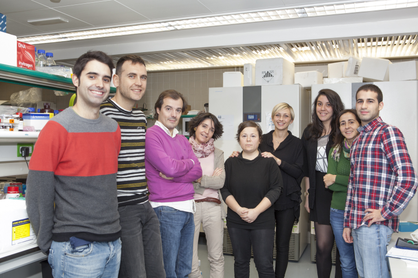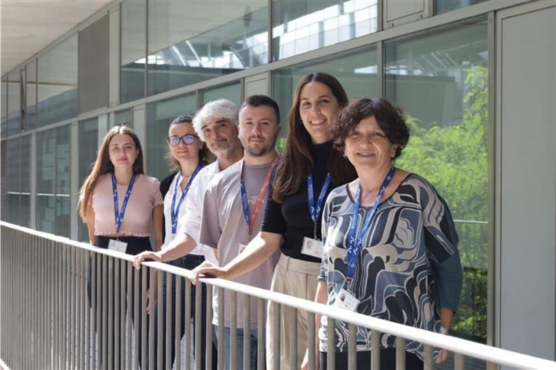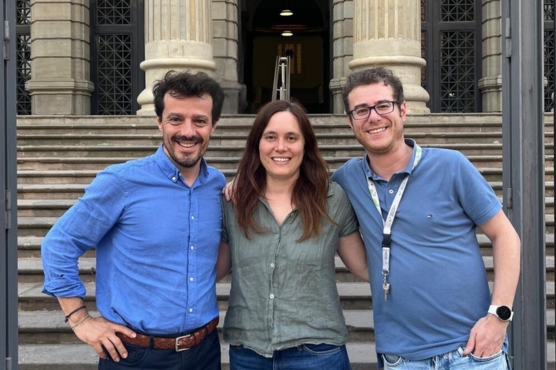Dr Pablo Menéndez, scientific director at the Clinic-UB Campus from the Josep Carreras Leukaemia Research institute, has just published an article in the prestigious magazine Leukemia,where he explains how the team has identified the role ofthe DLL4 protein in blood cell production, which is a step forward in finding out what goes wrong in the cases in which pro-B acute lymphoblastic leukaemia MLL-AF4 +, which the team is studying, is developed.
The Stem cells, mesenchymal cancer and development Group, led by Pablo Menéndez has published a new paper in the prestigious journal Leukemia, one of the Nature Group publications.
Blood cells are produced throughout our lifetimes from stem cells. The stem cells divide and produce new cells, which then change through a series of stages to become one of many hundreds of different types of cell in our blood. But how does a cell become one type and not another? Understanding this is essential, not only to know how healthy blood is made, but also to know exactly what is going wrong when different types of cancer develop.
Researchers undertaking what is called “basic research” study the mechanisms behind biological processes. Scientists in this group at the institute examine how cells in which particular genes are activated produce tiny substances that lock into parts of the cells like keys, which in turn then fit into new locks forming a long pathway of interactions. Completion of the pathway pushes the cell to behave one way or another. Some of the pathways can involve thousands of keys all fitting together in the chain and at each step there is a danger of something going wrong. The Menéndez group is particularly interested in how blood forms in unborn embryos, as it is errors produced during this stage that can cause the fatal disease infant MLL-AF4+ pro-B Acute Lymphoblastic Leukaemia, which they study.
In this publication the group explain how they have identified the role of one of the many keys in the chain, called DLL4.
DLL4 was known to be involved in blood cell production, but nobody knew how. It was known that in the embryo the production of new blood cells was intricately linked with the development of blood vessels and now the scientists have seen how cells with high DLL4 become cells that line the blood vessels and cells with low DLL4 become early stages of future blood cells.
However they also show how just having cells with high DLL4 close to them can make cells initially destined to be blood vessel linings can change course and become blood cells too.
Knowing exactly how these subtle changes affect blood production in the unborn embryo is another step towards knowing why it is going wrong in the cases in which leukaemia develops. More studies will show which drugs can be applied that only affect the faulty step and don’t disrupt other processes in the body and causes side effects. In the future these drugs will become treatments for currently incurable conditions. Clara Bueno of the group explains, “It is painstaking work, but also thrilling as each step brings us nearer to understanding the whole process. Only by knowing about this will we be able to stop diseases developing altogether, or cure them once they start.”









